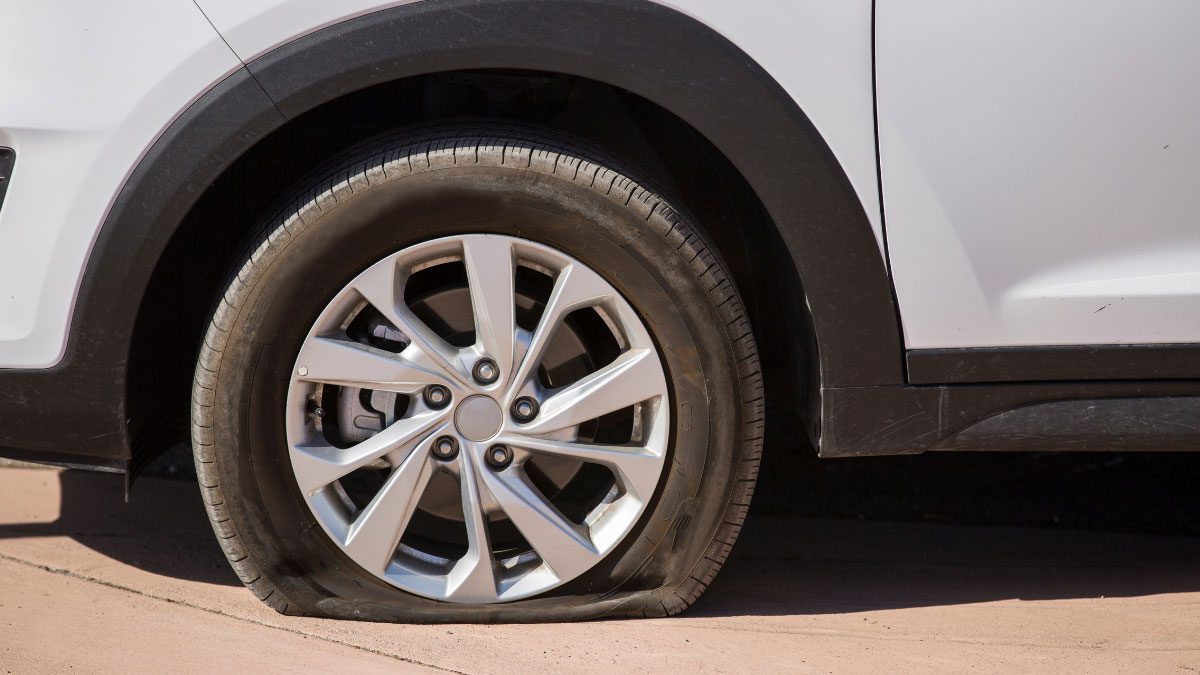Can You Drive With A Flat Tire? [A Complete Guide]
Even though the flat tire problem is not that serious and can be easily fixed, it often comes with a severe risk.
So, can you drive with a flat tire? Well, the answer is yes for the time being. However, this is not recommended as it can cause major damage to the cars. In addition to that, driving with a flat tire often impacts the handling, braking, and so on.
In this guide, we will discuss the topic of driving with a flat vehicle tire in detail. Not only that, but we will also explore other factors relevant to the topic. So let’s get into it!
Can You Drive With A Flat Tire?
Driving with a flat tire is possible, but it comes with a significant amount of risks. Experts and enthusiasts do not recommend driving the vehicle if you have a flat tire.
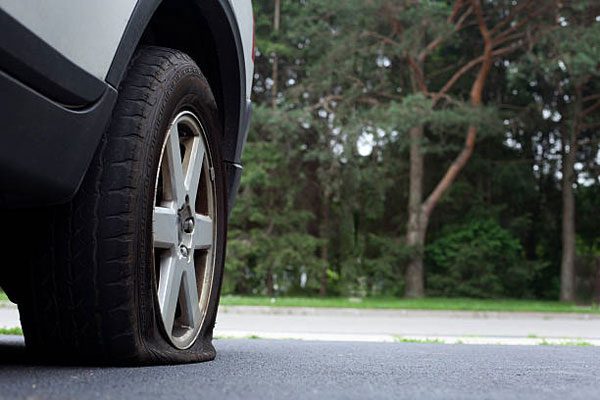
The danger surrounding accidents and injuries increases when the owner drives around with a flat tire. Not only that, but it also increases the risk of vehicle damage and can impact braking, handling, and many more.
Risks Of Driving With A Flat Tire
As we mentioned earlier, there are quite a few risks connected with driving when there is a flat tire. Here is an in-depth discussion of the consequences of driving with flat tires to understand the topic well.
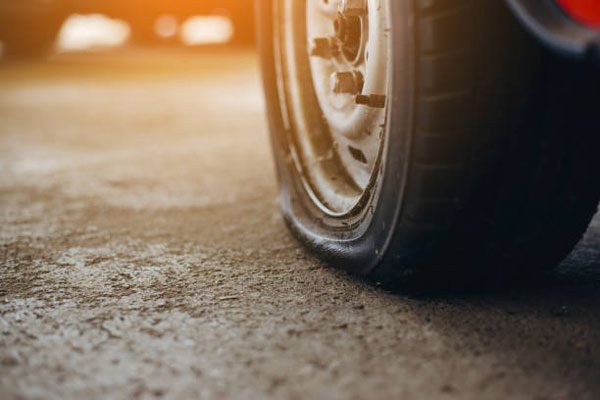
Control Loss
One of the top risks of driving with a flat tire is control loss. A flat tire causes the vehicle to be unstable, which often results in the driver losing control of the car on the road. This is especially risky if the car moves at high speed or makes sudden turns or movements.
Increased Danger Of Accidents and Injuries
When you drive a vehicle that has a flat tire, it increases the risk of accidents by a notch. This is because flat tires make it difficult to brake the vehicle properly. Not only that, but it also leads to collisions, accidents, and so on.

Vehicle Damage
Another risk connected to a flat tire is that it imposes a significant amount of risk on the vehicle. Driving a car with a flat tire often results in wheel damage or injuries to other parts of the vehicle. Repairing these parts can be an expensive deal, and some might require complete replacement.
Symptoms That You Have A Flat Tire
There are quite a few symptoms that can help you identify a flat tire in a vehicle. Let us take a look at these signs to help you know whether you have a flat tire or not.
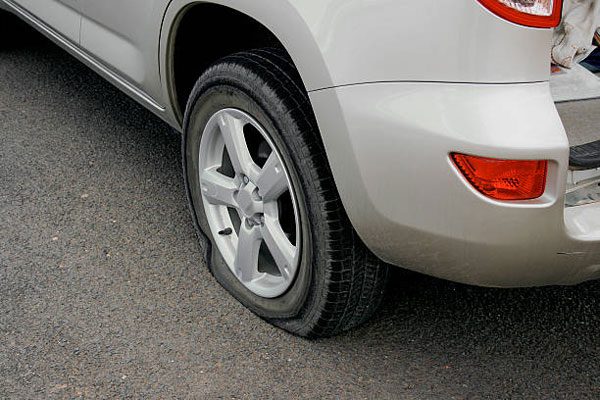
1. Reduced Car Performance
If you notice a deterioration in the performance of the vehicle, it can be due to a flat tire. Flat tires make it difficult for the driver to handle the car and apply brakes. Additionally, it also makes the vehicle difficult to take sharp turns.
2. Warning Light
The new vehicles in the market typically come with tire pressure monitoring systems (TPMS). This system monitors the air pressure in the tires and flashes a warning light if the pressure is low. The warning light gives the drivers a clear signal that there is a flat tire.
3. Uneven Wear
If any of the tires look more worn out compared to the other tires of the vehicle, it is a sign of a flat tire. The flat tire often causes the tire to wear unevenly and results in a major risk of accidents and injuries.
Steps To Take When You Have A Flat Tire
Taking necessary action is a must if you identify a flat tire. Here are the steps that you must follow when you have a flat tire.

Step 1: Drive To A Safe Place
If you find out that there is a flat tire in the middle of the road, make sure you drive to a safe place first. However, do not brake the vehicle suddenly or increase the speed too much.
Step 2: Turn The Hazard Lights On
After parking the car, ensure that you turn the hazard lights on. This will help other people on the road to know that you have stopped the vehicle due to an issue or emergency.

Step 3: Assess the Damage
Once you have parked the vehicle, get out of the car and assess the condition of the tires. Identify the damage caused by the tire and whether it has affected any other parts or not.
Step 4: Replace The Tire
Replace the flat tire if you have the proper tools to get the work done. However, make sure that you have proper knowledge of how to replace a flat tire to avoid any unwanted mistakes. In case you do not have any idea about the process, make sure to call a professional for help.
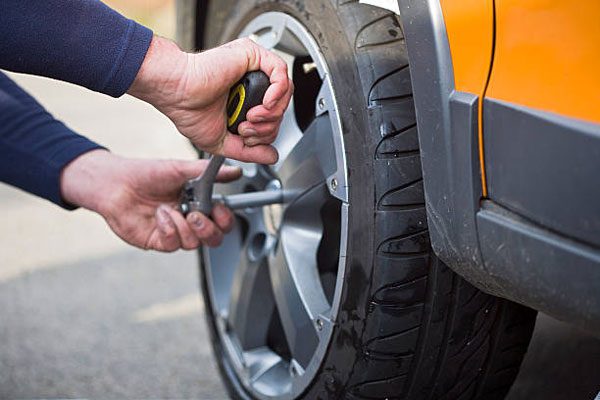
Step 5: Drive Safely
After replacing the flat or damaged tire, make sure that you drive the vehicle cautiously. Do not forget to maintain a low and proper speed, and make sure that you do not take any sudden turns.
If you find yourself dealing with a flat tire, it’s important to understand the potential risks and take appropriate action. At MotorAdvices, we strive to provide valuable information to help you make informed decisions about your vehicle. You may find our article on driving with a nail in your tire helpful, as it offers insights on assessing the situation and taking necessary precautions. Additionally, our article on driving with an expired license discusses the legal implications and potential consequences of driving without a valid license. By exploring these resources, you can stay informed and make responsible choices when it comes to your vehicle and driving privileges.FAQ
Puzzled about the topic? Take help from our most common queries to clear up the confusion!
No, driving with a flat tire is not illegal. However, it is quite dangerous and can lead to severe accidents or injuries. On top of that, it can cause severe damage to the vehicle.
Driving with a flat tire is not recommended at all. You must replace the tire with a spare one as soon as possible. However, in certain circumstances, you can drive the car with a flat tire until you find a safe location to park.
Repairing a flat tire is possible in a few cases. However, this is typically dependent on the severity of the damage and the cause of flat tire. But repaired flat tires do not usually provide the proper performance or traction.
Conclusion
Ensuring the proper condition of the vehicle when driving is a must to avoid accidents and injuries. Flat tires are a common occurrence, but they can take a severe and fatal turn if the driver is not careful. So, you shouldn’t drive with a flat tire. Rather, park the car immediately, and take the necessary action to resolve the issue.
Make sure that you follow the above steps to diagnose a flat tire and replace it properly. Even if you are driving with a flat tire, make sure that you drive at a slow speed and do not make any fast or sudden movements.

